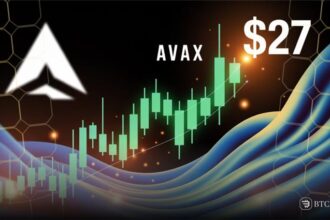Ripple just rolled out a fresh initiative under its Ripple Impact program. Teaming up with Mercy Corps Ventures and WËIA, Ripple launched its second pilot this year in Colombia. This one taps into the XRP Ledger (XRPL) to support 300 smallholder farmers. The goal is to improve income and traceability in rural farming communities.
Most of the farmers are employed on an informal basis. However, they don’t have transaction histories and credit histories. This denies them credit and growth. Ripple’s pilot is set to transform this. Additionally, using blockchain technology, it provides visibility and financial tools that many never had access to.
Blockchain tech powers transparency and growth
The XRPL now follows every step of the agricultural process, from plant to harvest. Verifying claims of sustainability is made simple with QR codes. This is not for looks. Farmers actually derive real benefits from it. Buyers are now confident in the product’s origins. That drives up the price of the product in the market.
Ripple’s project doesn’t stop at traceability. Through WËIA’s system, farmers connect directly with input suppliers and produce buyers. This cuts out middlemen and boosts profits. Moreover, there’s also a “Farm Now, Pay Later” model. It lets farmers access seeds and supplies up front, paying only after the harvest.
Well, the numbers show potential. Farmers in the pilot process 240 tons of panela (unrefined cane sugar) each month. Almost half of them are women, far above Colombia’s national average. That’s a win for inclusivity.
Ripple’s sustainable farming model could go global
Moreover, Ripple aims to prove three things: first, that verified sustainability boosts crop prices. Second, that buyers will be happier with transparent sourcing. And third, that more farmers will sign formal deals with big buyers.
If these goals are hit, the model could expand. The impact would stretch beyond Colombia. This small pilot could shape how rural farms across the globe access money, prove sustainability, and break the poverty cycle.
However, in a world where food fraud drains $50 billion yearly, Ripple’s pilot offers a trusted solution. XRPL’s transparency, speed, and carbon-neutral design make it a strong fit. Nevertheless, for the farmers, it’s a path to fair pay and stronger markets. For Ripple, it’s a live test of blockchain for good.







